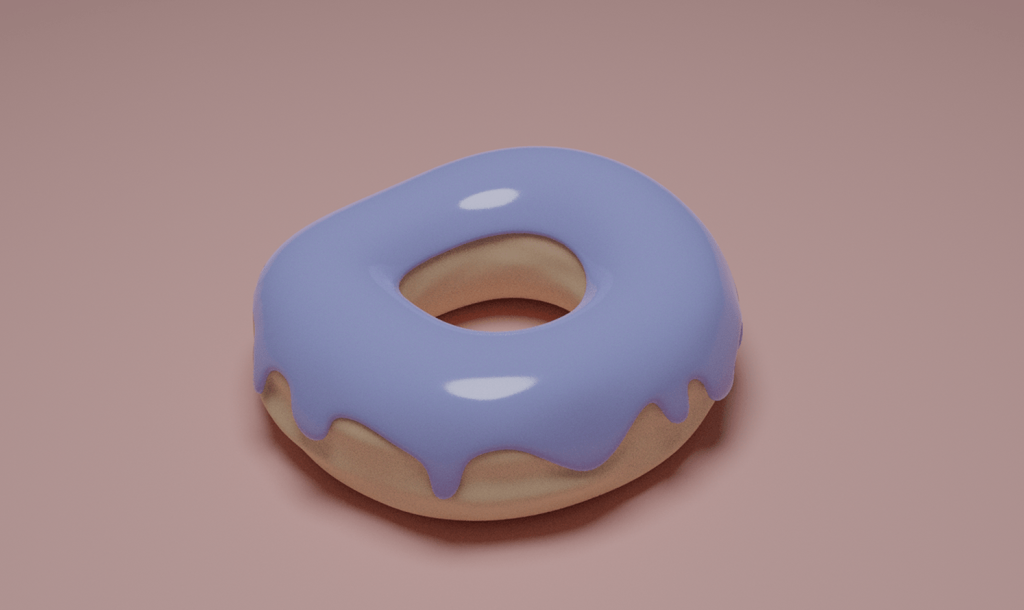Stepping out of 2D into the 3D world as a designer.
Widespread internet access has changed and transformed the way we learn and acquire new skills. Once upon a time, the barrier to entry for access to information relied on specialist education (requiring an additional expense) or the self taught home method, which involved purchasing books dedicated to the subject. The issues with the latter is that software outdates printed information at a significant rate, meaning the book you purchased in 2012 on ‘How to build a website’ is no longer relevant in today’s climate. However, that is now an issue of the past with free and up-to-date information available via platforms such as YouTube, and with more and more developers creating Freeware Programmes, specialist software can be available to all at no cost to the user.
Design Trends & 3D History.
In the last few years there has been a growing interest in the use of 3D Design within the digital landscape. The incorporation of 3D elements has increased in areas such as Web Design, illustration, VR & AR and also motion and video content. There is probably a wide range of reasons why we are now seeing the use of 3D across multiple platforms, but the aspect that interested me the most is the rise of traditionally trained designers in areas such as graphic design and illustration choosing to create their own 3D assets or renders to work with.
3D Design in particular has been, and I would argue still is, a specialist skill set. The skill blurs the line in usage and is traditionally associated with technical industries such as architecture, interior design, games development and CGI. The software once required to create hyper realistic visualizations had the stigma of being intimidating to outsiders, with complaints of complex interface design and convoluted terminology being a drawback for new users to learn the skill. Additionally the main two biggest drawbacks for a new user to get into 3D Design would have been the high cost of specialist software, combined with GPU and computer graphical requirements needed in order to create and produce designs. This meant that anyone considering learning the art of 3D Design would need to invest a large financial commitment.
Stepping out of my comfort zone and learning new skills.
Thanks to major advancement in technology, with computers and laptops featuring more powerful GPUs and larger memory storage at cheaper prices, the doorway has opened for a larger audience to experiment with 3D technologies.
Initially, I began learning 3D after wanting to experiment with composition and layout in a way that would allow me greater flexibility over the final outcome. After doing some research about which software to use (there’s quite a few out there!) I decided to learn Blender. One of the biggest perks about learning with blender is that the software is completely free meaning that if you decide it’s not for you, or perhaps you don’t have as much time to invest in learning as you first thought, you don’t end up feeling like you’ve wasted your money. I think that it’s also important to note that just because it is free, does not mean it is inferior to paid programmes. Given the time and knowledge, it is possible to create highly photorealistic renders using the Blender software.

The next stage I undertook was learning the basic fundamentals of 3D Design. There’s a running joke in the 3D community of the ‘Donut’ project, which is exactly what it sounds like. It is almost a rite of passage for a new learner to undertake the Donut Project Course (which is free and fully available on Youtube). The aim of making the donut is to cover the very basics of what you need to know in order to model, light, and render a project. While at first glance it may not be the coolest or trendiest way to showcase your new skillset, it was a very important milestone in helping me to understand the 3D software interfaces and how to create a basic model that I could then edit.
Once I had the basic’s under my belt, I decided to go it on my own and experiment with a range of techniques and styles to continue building upon my new found knowledge. While that’s not to say it hasn’t been a steep learning curve, the ability to google ‘How do I do _____?’ ’ and find most of the answers to the stumbling blocks I have come across, has been invaluable.
While this isn’t to say everyone will enjoy 3D Design and that every designer needs this skill , if it is something you’ve been considering exploring, the options are there. For me, the ability to learn it completely free has provided a great opportunity to incorporate 3D elements into my design process.


3D Resources and Links.
If you’re interested in learning more about 3D Design but are not sure where to start, here are some great resources to look into.
Software & Programmes: Blender (Free)
https://www.blender.org/
Cinemia 4D (Paid, but free trial / Student Access)
https://www.maxon.net/en/cinema-4d
Adobe Dimensions (Paid, but part of Adobe CC)
https://www.adobe.com/uk/products/dimension.html
Vectary (Free and paid plan)
https://www.vectary.com/
3DS Max (Paid, but free trial)
https://www.autodesk.co.uk/products/3ds-max/overview?term=1-YEAR
Courses & Guides:
Blender ‘Donut’ Tutorial Playlist
https://www.youtube.com/watch?v=TPrnSACiTJ4
Intro to Cinemia 4D for Designers
https://www.3dfordesigners.com/
Blender Tutorials
https://www.youtube.com/channel/UCuNhGhbemBkdflZ1FGJ0lUQ/videos



